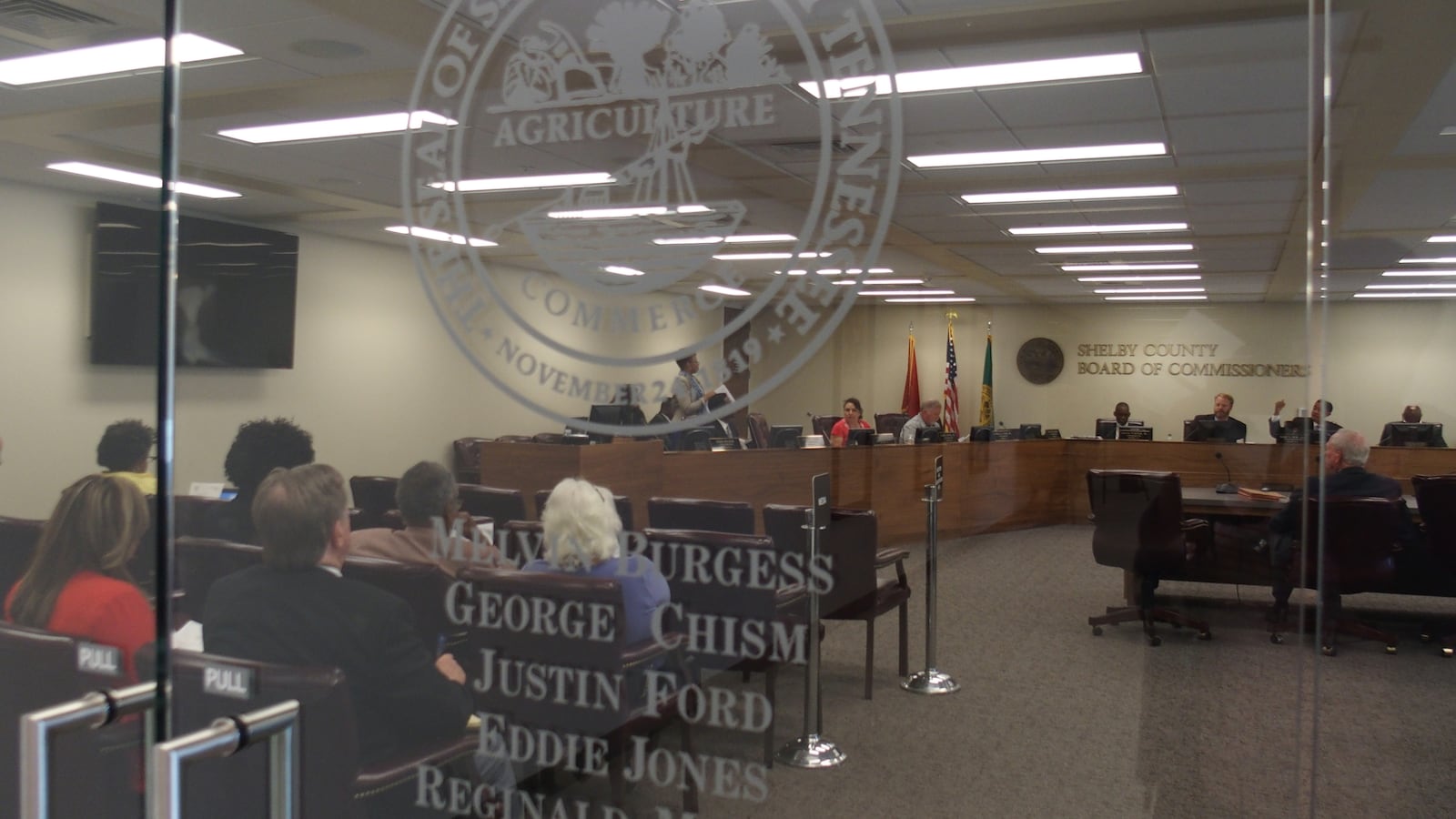This year’s budget season for Tennessee’s largest school district has returned to a predictable cycle: shrinking enrollment, declining revenue, a funding gap and school closures.
To break the cycle, Shelby County Schools must come to grips with its under-utilized buildings and falling enrollment and address the widening crevice head-on, say many policymakers and long-time observers.
Currently, about a dozen of Memphis schools operate at under 50 percent capacity. It’s not clear how much money the district loses each year due to under-utilized buildings, but what is certain is that each dollar lost prevents critical investments in a district that’s just beginning to turn the trajectory on low test scores.
The inefficiency is likely to be pointed out again on Wednesday when district leaders ask the Shelby County Commission for an additional $35 million to cover their $954 million spending plan for the fiscal year beginning July 1. Commissioners, who hold the district’s purse strings for local funding, noted the facility issue last year when district leaders asked for an additional $14 million — and the district received about half of their request.
This year, Superintendent Dorsey Hopson has made efforts to reduce the district’s facility footprint by recommending the closures of eight schools and an adult center at the end of the school year. But currently, only the adult center closure is definite. The school board ultimately voted to delay one school closure for a year, and another school’s fate hangs in the balance. Operators of three charter schools approved for closure are scheduled to learn from the State Board of Education on Friday whether their appeals have been granted.
Even if all were shuttered, the effect would only begin to scratch the surface of the facility excess created across decades by an enrollment drain begun under several economic recessions and exacerbated by the creation of the state-run Achievement School District and six suburban municipal districts, which continue to siphon off students from Shelby County Schools.
This year, commissioners disagree on how much facilities should play into addressing the district’s current budget shortfall.
Commissioner David Reaves, a former school board member who heads the panel’s education committee, says more revenue isn’t the solution.
“It’s about a district willing to reinvent itself,” he said in reference to right-sizing the district’s use of facilities in face of shrinking enrollment. “A lot of their extra money is tied up in that.”

But Commissioners Eddie Jones and Melvin Burgess want to look closer at the county’s wheel tax, which currently allocates $32 million to schools — half to operations and half to capital improvements. They want to redirect the full amount to operations. And with property tax revenues slightly ahead of projections, Jones believes the money will be there to fund the gap without raising taxes.
“The dollar follows the kids, not the buildings,” Jones said Tuesday. Closing under-utilized buildings “would free up more money for the classroom, but it will not determine how much less money we’ll give them. That’s just a talking point.”
To cover last year’s budget gap, school leaders dipped into the district’s reserve fund. This year, Hopson said that approach is unsustainable.
“He’s right; it’s not sustainable,” Reaves agreed. “The reason that’s not sustainable is because their footprint is too big.”
School board member Kevin Woods said the board continues to make a good-faith effort.
“The district has been closing schools for a very long time,” Woods said. “I think the County Commission can look at the district school board record on making tough decisions. Once they look at our record on decisions to right-size the district, it will be crystal clear ….”
Burgess, who is also a quality control manager for Shelby County Schools, said more work must be done, but the focus should be on making more school improvements and boosting enrollment. Underfunding the district would only create more problems, he said.
“We’ve got to find a way to make our schools good again so we’re not losing kids,” said Burgess, who favors increasing the wheel tax by $1 to help fund schools.
That approach may help this year, but the challenges are systemic, according to Marcus Pohlmann, a political science professor at Rhodes College who has chronicled the history of Memphis schools.
“You don’t build infrastructure for 110,000 (students) and overnight adjust it to 95,000. For a school system, that has got to be a logistical nightmare,” he said. “Give them a guaranteed five-year population, and maybe you can work with that. It’s amazing they’re even able to stay afloat.”
Hopson’s administration is expected to release a facilities study later this year to provide a more comprehensive review. In the meantime, the district still needs funding support to make more academic gains, Pohlmann said.
“The reality is, the system needs a whole lot more than what they have. Not less,” Pohlmann said.
"The dollar follows the kids, not the buildings."
Eddie Jones, county commissioner
If the County Commission votes to provide an additional $35 million to Shelby County Schools as requested, it would have to increase funding for the county’s municipal districts too by about $10 million. Shelby County Mayor Mark Luttrell’s proposed budget includes only an $8.7 million increase to all seven of the county’s school districts, of which Shelby County Schools would receive about 78 percent.
And Shelby County Schools isn’t the only group asking for additional funding. “All we’ve got in government is competing needs and we’ve got to prioritize,” said Commissioner Heidi Shafer during a recent budget hearing with other county departments.
Burgess maintains that education has got to be one of those priorities. However, school leaders have to prioritize as well, he said, and demonstrate good stewardship of their resources.
“Either you invest on the front end or spend on the back end,” he said, referring to the costs of educating kids for college and careers to the costs of unemployment and criminal justice. “If they need $50 million, give it to them. But we’ve got to hold them accountable. You’ve got to have a plan.”
Editor’s note: This story has been updated from an earlier version to include comments from County Commissioner Eddie Jones.

